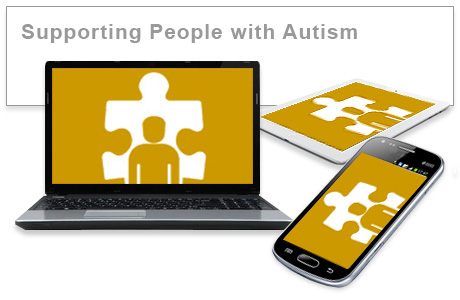supporting-people-autism-f
Supporting People with Autism (F): e-learning training course

This e-learning Autism course entitled Supporting People with Autism, is broken down into four easy-to-follow units. It explains what autism spectrum conditions are, the impact they have and how people with autism differ from others in the way they make sense of the world.
The Autism course identifies some of the common difficulties that autistic people experience and suggests techniques for helping them to overcome these on a day-to-day basis. Learners will then be able to use this information to provide people in their care with the appropriate support and guidance according to their needs.
Unit 2 introduces learners to autism spectrum conditions and provides an awareness of the different forms of autism and an understanding of the impact they can have on individuals. Learners will also look at the importance of an early diagnosis, the triad of impairments as identified by Dr Leo Kanner and consider strategies for helping people with autism to overcome some of their difficulties.
Unit 3 explores how people on the autism spectrum experience and make sense of the world around them. Being aware of how they do this differently from us is vital in terms of providing the help and support they need. Learners will also look at the other
difficulties that autistic people face, and identify ways in which their support networks
can help them come to terms with these problems.
Unit 4 identifies the legislation in place which aims to provide protection and opportunities for people with disabilities. Learners will look at some general examples as well as The Autism Act 2009. The unit then goes on to describe person-centred planning and gives learners the opportunity to explore the benefits of this approach when providing support for people with autism.
The objectives for each study unit of this Autism course are that learners will be able to:
- describe autism and list the different conditions within the spectrum
- identify the benefits of an early diagnosis
- understand the difficulties many autistic people have with communication, social behaviour and relationships
- explain strategies for supporting individuals in relation to the triad of impairments
- understand how people with autism often see the world around them in a different way to those without the condition
- describe the 'theory of mind' experiment and explain how it can be used as a diagnostic tool
- suggest possible ways of supporting people with memory problems or sensory sensitivity
- describe some of the legislation in place to support people with disabilities in their everyday lives
- explain the key aims of The Autism Act 2009
- understand what a person centred approach to planning is and identify its benefits
- identify the reasons why a person-centered approach is effective for supporting people with autism.
Copyright Notice | Terms and Conditions | Privacy Statement | Disclaimer |
Copyright © 2006 - 2024 Embrace Learning Ltd.